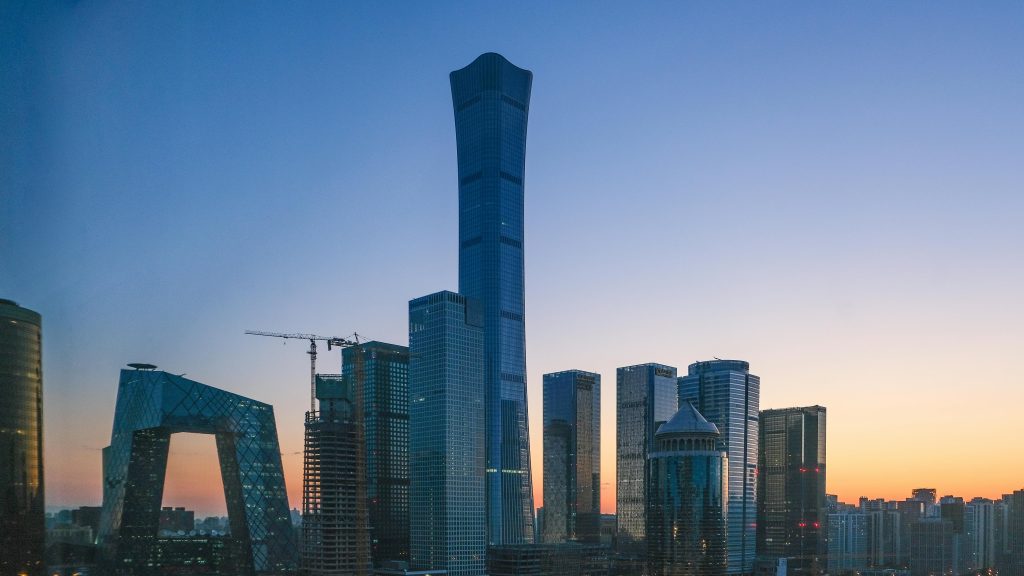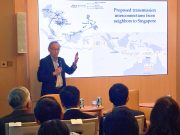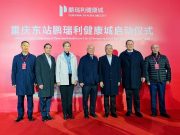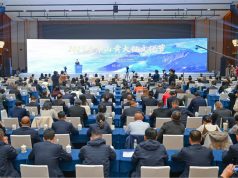
(Singapore, 06.11.2025)China is aiming to expand its economy to 170 trillion yuan (about S$31.2 trillion) within the next five years, with Premier Li Qiang expressing confidence that the nation can sustain steady growth despite ongoing global trade tensions and domestic deflationary pressures.
Speaking at the China International Import Expo (CIIE) in Shanghai on Wednesday (Nov 5), Li said the country’s gross domestic product (GDP) is projected to exceed 170 trillion yuan by 2030. This implies an average annual growth rate of around 4%, assuming stable prices — a pace consistent with China’s nominal GDP growth so far this year.
“This increase will make new and significant contributions to global growth,” Li told government officials and international business leaders. “China will focus on expanding domestic demand, especially by boosting consumption, to unleash the full potential of our market.”
From Quantity to Quality
Li’s remarks suggest that China’s growth strategy is evolving. Instead of chasing double-digit GDP gains as in past decades, Beijing is now emphasizing “high-quality growth” — one that prioritizes stability, domestic consumption, and structural improvements.
Economists say Li’s projection should not be seen as a rigid target but as a “growth floor” that signals policymakers’ intent to prevent further economic slowdown.
According to Bloomberg, Michelle Lam, Greater China economist at Societe Generale SA, said the projection reflects growing confidence that China’s nominal GDP growth has likely hit its lowest point.
“The figure suggests that nominal GDP growth won’t decline further from here,” Lam noted.
“The priority now is shifting away from sheer growth numbers toward tackling deflation and maintaining economic stability.”
Meanwhile, Zhaopeng Xing, senior strategist at ANZ Bank, estimated that China’s GDP could reach between 170 trillion and 180 trillion yuan by 2030, representing a reasonable annual growth rate of around 4% to 5%.
China Fights Deflation to Spur Spending
China remains on course to meet its real GDP growth target of about 5% this year. But nominal growth — which includes price changes — has been weaker due to persistent deflationary trends.
Falling prices pose a major risk, as they encourage consumers to delay spending, reduce business profits, and increase the real burden of debt. These factors can trap the economy in a downward cycle of weak demand and slower investment.
In response, Beijing has rolled out what it calls an “anti-involution” campaign, designed to rein in destructive price wars across key industries such as electric vehicles, food delivery, and consumer electronics.
The goal is to help companies restore pricing power and profit margins — and in turn, support wage growth that can fuel household spending.
“Breaking this cycle of deflation has become one of China’s top policy priorities,” said Xing. “Reviving consumer confidence is crucial for sustainable recovery.”
Li Qiang Warns Against Protectionism
While China’s domestic market remains vast — home to 1.4 billion consumers — its global reputation as a trading partner continues to face challenges.
The United States and the European Union have long criticized China for trade practices that they say give unfair advantages to Chinese firms. Rising protectionism in global markets has also added pressure on Chinese exporters.
In his speech, Li took aim at such restrictions, warning that “unilateral and protectionist measures have had a severe impact on the international economic and trade order.”
He emphasized China’s commitment to maintaining open global supply chains, pledging that Beijing will work with other countries to promote “stable and unimpeded” international trade. Among the foreign leaders in attendance at CIIE were Georgian Prime Minister Irakli Kobakhidze and Serbian Prime Minister Duro Macut.
A New Phase After the Trade Truce
Tensions between China and the U.S. eased slightly last week after both countries reached a trade truce in South Korea. The agreement, struck between President Donald Trump and President Xi Jinping, included plans to reduce tariffs and roll back export controls — a move seen as a rare bright spot in an otherwise tense relationship.
The thaw has provided some breathing room for Chinese policymakers as they prepare for the country’s next five-year plan (2026–2030).
According to an official readout released last week, Beijing plans to “significantly boost consumption’s contribution” to the economy in the next five years. The strategy includes Expanding spending on public services, Encouraging household consumption, and Creating more employment opportunities to sustain income growth.
These steps reflect a broader policy shift — moving from an export- and investment-led model to one driven more by domestic demand.
“China’s economic development model will be increasingly powered by consumption,” Li said. “We will continue to create a fair, transparent and open business environment that benefits global enterprises and our people alike.”
If China achieves its target, the 170 trillion yuan milestone would further consolidate its position as one of the world’s largest economies. However, economists caution that the country still faces significant challenges, including the need for deeper structural reforms, a slowing population growth, and increasing global trade uncertainties.
Overall, Li’s remarks at the Shanghai expo underscored Beijing’s focus on strengthening domestic demand and consumer confidence as key drivers of growth for the years ahead.





































